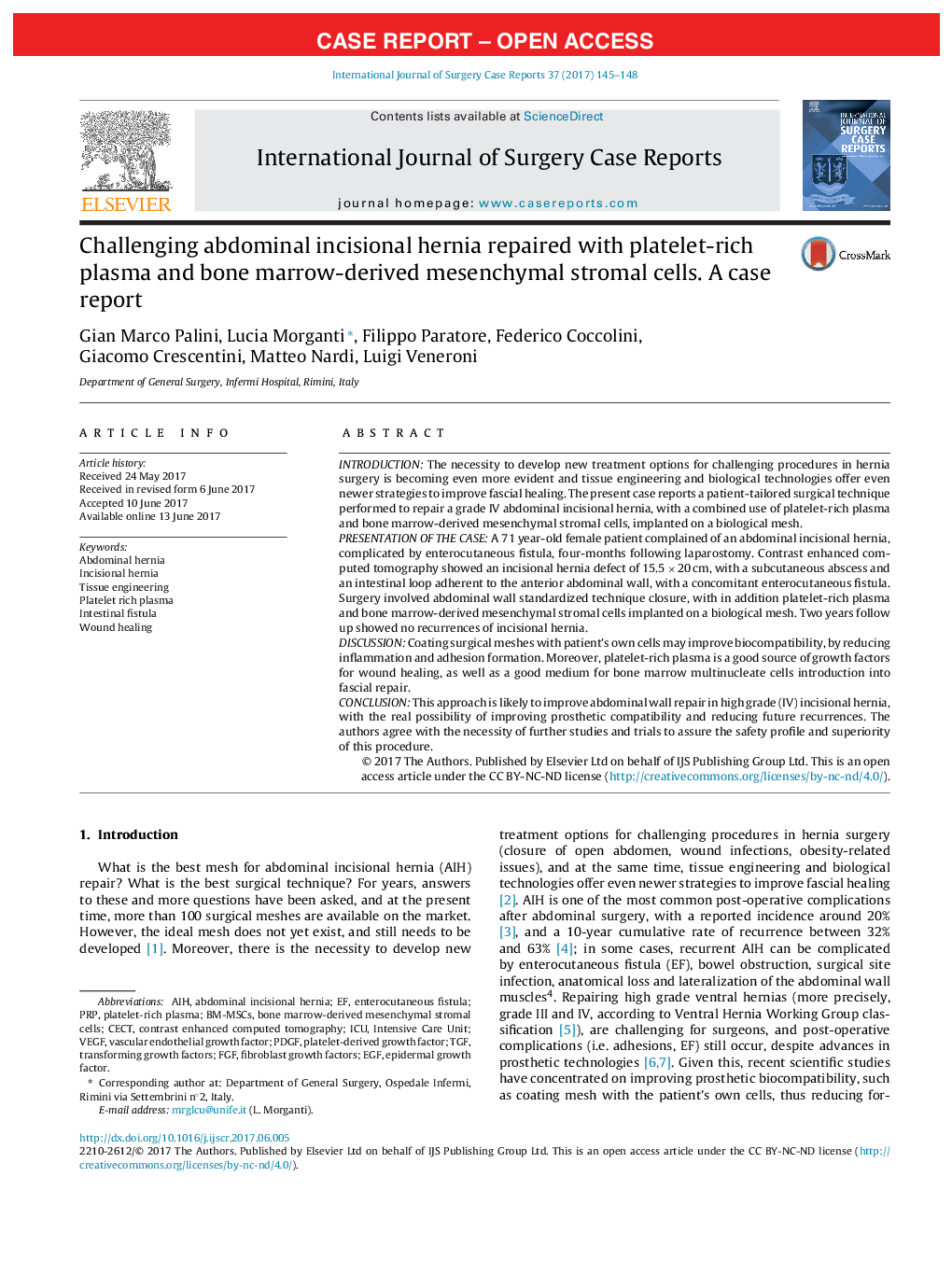| کد مقاله | کد نشریه | سال انتشار | مقاله انگلیسی | نسخه تمام متن |
|---|---|---|---|---|
| 5732692 | 1612077 | 2017 | 4 صفحه PDF | دانلود رایگان |
- New treatment options for challenging procedures in hernia surgery are necessary.
- Possibility of improving prosthetic compatibility and reducing future recurrences.
- Tissue engineering offers new strategies to improve fascial healing.
- Case of a surgeon - challenging abdominal incisional hernia.
- Treatment provided was PRP and BM-MSCs on a biological mesh.
IntroductionThe necessity to develop new treatment options for challenging procedures in hernia surgery is becoming even more evident and tissue engineering and biological technologies offer even newer strategies to improve fascial healing. The present case reports a patient-tailored surgical technique performed to repair a grade IV abdominal incisional hernia, with a combined use of platelet-rich plasma and bone marrow-derived mesenchymal stromal cells, implanted on a biological mesh.Presentation of the caseA 71 year-old female patient complained of an abdominal incisional hernia, complicated by enterocutaneous fistula, four-months following laparostomy. Contrast enhanced computed tomography showed an incisional hernia defect of 15.5Â ÃÂ 20Â cm, with a subcutaneous abscess and an intestinal loop adherent to the anterior abdominal wall, with a concomitant enterocutaneous fistula. Surgery involved abdominal wall standardized technique closure, with in addition platelet-rich plasma and bone marrow-derived mesenchymal stromal cells implanted on a biological mesh. Two years follow up showed no recurrences of incisional hernia.DiscussionCoating surgical meshes with patient's own cells may improve biocompatibility, by reducing inflammation and adhesion formation. Moreover, platelet-rich plasma is a good source of growth factors for wound healing, as well as a good medium for bone marrow multinucleate cells introduction into fascial repair.ConclusionThis approach is likely to improve abdominal wall repair in high grade (IV) incisional hernia, with the real possibility of improving prosthetic compatibility and reducing future recurrences. The authors agree with the necessity of further studies and trials to assure the safety profile and superiority of this procedure.
Journal: International Journal of Surgery Case Reports - Volume 37, 2017, Pages 145-148
